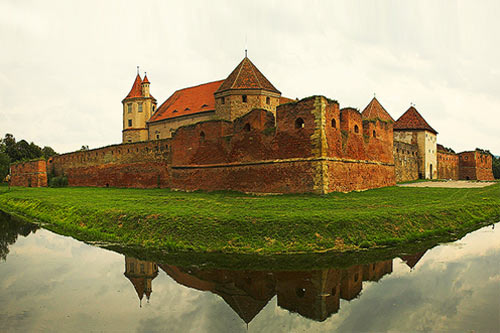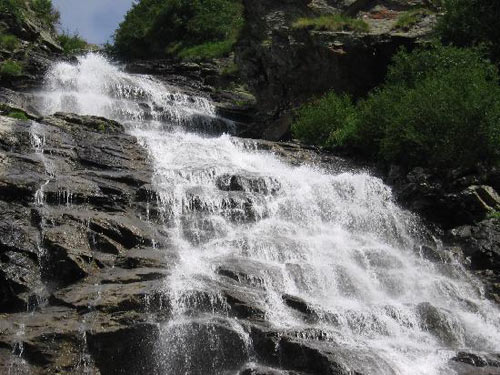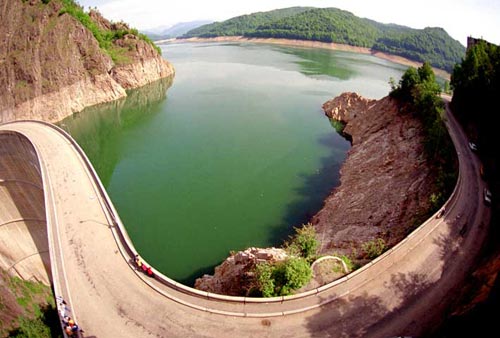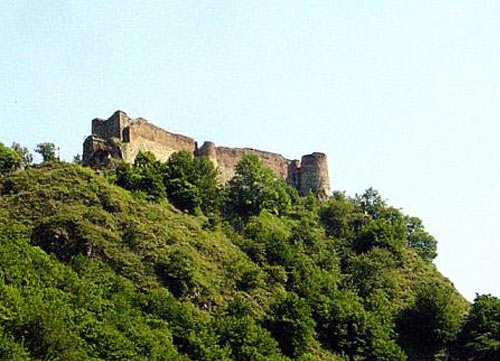Brasov Day Trips / Brasov Day Tours
- Day trip - Castle Tour
- Day trip - Saxon Villages Tour
- Day trip - Medieval UNESCO Tour
- Day trip - Medieval Tour
- Day trip - Fagaras County Tour
- Day trip - Dracula Tour
- Day trip - Fortified Churchies Tour
- Day trip - Transylvanian Alps Tour
- Day trip - Relaxation Tour
- Day trip - Hunyad Castle Tour
- Day trip - Natural Wanders Tour
- Day trip - Explore Transylvania Tour
- Experience wildlife: Bear watching
- Day trip - Saxon Churches Tour
- Day trip - Bran Castle Tour
- Day trip - Peles Castle Tour
- Unforgettable memories: Horse riding
- Adrenalin rush: Paragliding
- Day trip - Airport transfer
BNR Exchange Rate 22.01.2025
Taking a Tour in Brasov...
Search your Brasov Tour
Brasov Day Trip Tours in Transylvania
Explore Transylvania Tour
Tour route:
Brasov - Fagaras - Balea Cascada (Balea Waterfall) - Balea Lac (Balea Lake) - Vidraru - Poienari - Curtea de Arges - Brasov
Included in Explore Transylvania Tour:
- pick-up from any address in Brasov - transportation -all entrances fees
Tour duration:
full day
Period:
all year
Brasov tour departure:
9 AM - meeting point or any other address in Brasov
Price:
2 persons 95 €/person 3-4 persons 75 €/person 5-7 persons 70 €/person
Tour photo gallery:
Tour details:
Fagaras Stronghold
Built in the 15th century on the ruins of a wooden construction, in the South Eastern Part of Transylvania, the Fagaras stronghold had great importance in defending the region in the medieval times.
At the centre of the stronghold stands the castle. It has three levels (basement, ground floor, first floor) and five towers (the Red Tower, the Black Tower, the Prison's Tower, Tomori Tower and the Motley Tower). The castle has 80 rooms, and stronghold is surrounded by a deep and wide moat. The settlement was ranked among the strongest in Transylvania, standing up to Turkish and Tartar invasions. Access is made through a bridge over the defense moat.
Inside is the Museum of Fagaras Country; comprised of an archaeology section, which render the evolution of the Fagaras borough; history section, which display Roman artifacts and a collection of medieval weapons, and ethnographic section, which focus on artistic and folk crafts in the area.
Balea Waterfall
Balea Waterfall, located in the Fagaras Mountains, is one of the most famous waterfalls in Romania, is at an altitude of 1234 meters and the water falls from 68 meters.
Balea Lake
Balea Lake is a glacier lake situated at 2,034 m of altitude in the Fagaras Mountains, in Sibiu County, is 360 meters long, 240 meters broad and 11 meters depth. There are two chalets opened all the year round, a meteorological station and a mountain rescue (Salvamont) station. It is accessible by car on the Transfagarasan road during the summer, and the rest of the year by a cable car from the "Balea Waterfall" chalet.
In 2006, the first ice hotel in Eastern Europe was built in the vicinity of the lake.
Vidraru Dam
Vidraru Dam is an arch dam built on a foundation of rock, and it was built to produce hydroelectricity. Its construction created a reservoir, Lake Vidraru. The dam's height is 166 meters, the arch length 305 meters, water accumulation volume 465 million cubic meters, the reservoir has a total shoreline (perimeter) length of 28km.
The dam's construction took 5 and a half years. It required 42 km of subterranean tunnels, excavation of 1,768,000 cubic meters of hard rocks, out of which approximatively 1 million had to be extracted from underground, 930,000 cubic meters of concrete, out of which 400,000 cubic meters were underground and required the installation of 6,300 tons of electro-mechanical equipment. When completed, it ranked 5th in Europe, and 9th in the world. In an average hydrological year it can generate approximately of 400 GWh/year.
Poenari Castle (Real Dracula's Castle)
Poenari Castle was erected around the beginning of the 13th century by the rulers of Wallachia. Around the 14th century, Poenari was the main citadel of the Basarab rulers. In the next few decades, the name and the residents changed a few times but eventually the castle was abandoned and left in ruins.
However, in the 15th century, realizing the potential for a castle perched high on a steep precipice of rock, Vlad III the Impaler repaired and consolidated the structure, making it one of his main fortresses.
Although the castle was used for many years after Vlad's death in 1476, it eventually was abandoned again in the first half of the 16th century and was in ruins by the 17th century. Due to its size and location, control of the castle was difficult to take, even by natural forces. However, in 1888, a landslide brought down a portion of the castle which crashed into the river far below. Nonetheless, the castle was slightly repaired and the walls and its towers still stand today. To reach the castle, visitors need to climb 1,500 steps.
Curtea de Arges (Orthodox Cathedral)
Curtea de Arges is one of the oldest in Romania. According to tradition it was founded early in the 13th century by Negru Voda (or Radu Negru), succeeding Campulung as capital of Wallachia.
The Cathedral of Curtea de Arges (early 16th century) is one of the most famous buildings in Romania, and stands in the grounds of a monastery. It resembles a very large and elaborate mausoleum, built in Byzantine style, with Moorish arabesques. In shape it is oblong, with a many-sided annex at the back. In the centre rises a dome, fronted by two smaller cupolas, while a secondary dome, broader and loftier than the central one, springs from the annex. Each summit is crowned by an inverted pear-shaped stone, bearing a triple cross, emblematic of the Trinity.
Its legends have inspired many Romanian poets, among them the celebrated Vasile Alecsandri. One tradition describes how Neagoe Basarab, while a hostage in Constantinople, designed a splendid mosque for the sultan, returning to build the cathedral out of the surplus materials. Another version has Radu Negru employing one Mesterul Manole or Manoli as architect. Manole being unable to finish the walls, the prince threatened him and his assistants with death. At last Manole suggested that they should follow the ancient custom of placing a living woman into the foundations; and that she who first appeared on the following morning should be the victim. The other masons warned their families, and Manole was forced to sacrifice his own wife. Thus the cathedral was built. When Manole and his masons told the prince that they could always build an even greater building, Radu Negru had them stranded on the roof so that they could not build something to match it. They fashioned wooden wings and tried to fly off the roof, but, one by one, they all fell to the ground. A spring of clear water, named after Manole, is said to mark the spot where he fell.
Reccommended day trip tours from Brasov




 = 4,9764 LEI
= 4,9764 LEI 
 = 4,8074 LEI
= 4,8074 LEI 






